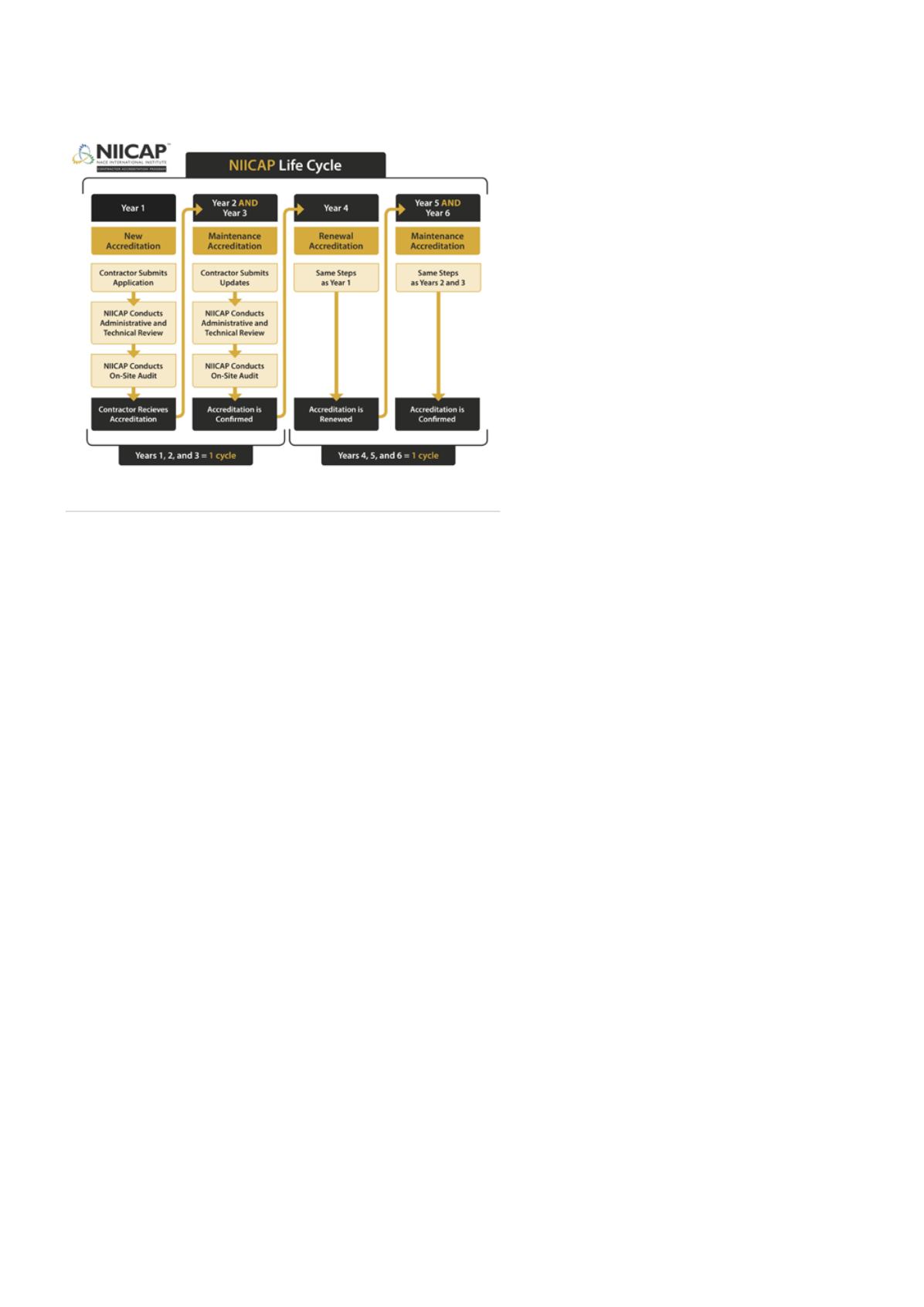
product and service quality, extending asset life and
performance, enhancing best practices, mitigating business
and health, safety and environmental (HSE) risks, and
marketing themselves against competitors.
NIICAP was designed to be a transparent, industry-
driven system to ensure that asset owners who specify
and select NIICAP-accredited contractors know they are
making an informed choice for an area of their business
that cannot be compromised.
“We have been looking forward to a programme of
this calibre in this industry to come about for some time,”
Michael Baase, Coatings Programme Manager, Kentucky
Transportation Cabinet said. “NIICAP is a tool, which will
enable us to attract contractors that have proven their
ability to provide deliverables in a timely and professional
manner, with the confidence in the finished product being
in accordance to our needs.”
Audit process
Earning accreditation through NIICAP is centred on
a detailed onsite audit process. Contractors who
successfully pursue accreditation distinguish themselves
as best-in-class coating contractors by demonstrating
the highest levels of knowledge, consistent performance,
trained personnel, product and service quality,
organisational quality processes aligned with ANSI/
ISO/ASQ Q9001-2008: ‘Quality Management Systems –
Requirements,’ 2008.
A key feature of NIICAP is that onsite audits are
required annually, to give maximum assurance to asset
owners. Project site audits are overseen by NIICAP
contracted third-party auditors who have documented
quality assurance experience and expertise in the practices
being audited.
The board
The NIICAP is under the purview of an Oversight Board,
composed of eight members who are responsible for
setting the technical direction for NIICAP; voting on
the conferral of accreditation to contractors; ensuring
NIICAP is meeting owner, contractor, and industry
needs; and managing a continuous improvement
programme for the accreditation process.
In the development of NIICAP, three contractors
agreed to serve as test candidates for initial audits.
Turner Coatings LLC, Blastco, and Thomas Industrial
Coatings worked with the NIICAP developers and
auditors who utilised NIICAP written audit standards
to perform onsite inspection of business practices.
Each company went through NIICAP’s complete
audit process, which included an in-depth audit
leading to a full assessment of the contractor’s
business and administrative practices, as well as
practices in the field or shop. A NIICAP auditor went
to each contractor’s business location or project
site location to audit quality processes, observe
performance and assess capabilities.
“The process of receiving NIICAP accreditation is
very rigorous,” James Hart QC Manager, Blastco, TF Warren
Group said. “But we decided it was worth putting in the
time and effort to do the trial audit because we haven’t
seen a programme of such high quality before. We are
eager to complete the audit process and be among the
first to achieve this accreditation.”
To ensure the highest standards, the NIICAP follows a
firm Policy and Procedures Manual, which highlights the
transparent accreditation and auditing programme that is
focused on open communication and free of conflict of
interest. The programme endorses only coating contractors
who have demonstrated capabilities and competencies
necessary to meet owner requirements.
NIICAP Standards
The programme is guided first and foremost by three
NIICAP Standards, which are detailed and leave no
question as to the basis of each audit of contractors’
administrative records and onsite operations and
performance. Those standards are:
)
)
AS-1 – NIICAP Audit Standard 1 (AS-1) Programmes for
Accreditation of Field and Shop Coatings Contractors.
)
)
AS-2 – NIICAP Audit Standard 2 (AS-2) Hazardous
Waste Removal and Management Accreditation.
)
)
AS-3 – NIICAP Audit Standard 3 (AS-3) In-House
Applicator Trade Skills Training Accreditation.
The Initial and Renewal Accreditation process is a
thorough review in accordance with the relevant auditing
standard; the Maintenance Accreditation process is similar,
however it involves validation of known programmes and
work practices and is less intensive. The cycle consists of
one Initial accreditation, followed by two Maintenance
Figure 1.
NIICAP lifecycle graphic.
32
World Pipelines
/
MARCH 2016


